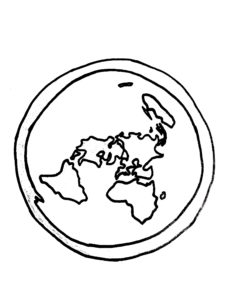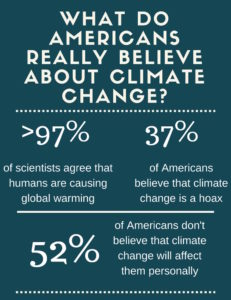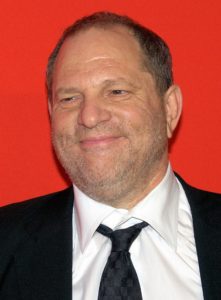by Julia Moser ’19 and Katie Urdan ’19


The earth was proven to be round in 500 BC by Pythagoras. At the time, it was a monumentous discovery that drastically changed the way that humans think about the universe we live in. The first human went to space in 1961, and since then, it has been a widely accepted fact that the earth orbits the sun. And yet, the 21st century brings a resurgence of the Flat Earth Theory.
One American, who we will refer to as Jack Frost, is a firm belie
ver that the earth is flat. He has written books,made hundreds of Youtube videos, and created an app to promote the Flat Earth Theory. Frost is just one example of the thousands of people living in America who believe that t
hey are being deceived by what they call “mainstream science.”
Frost hasn’t always been in support of the Flat Earth theory. He started to believe that the earth is flat in 2014 and explains how, “Once it hits you, once you finally realize it, once you see it for what it is, you know, a terrarium, planetarium, a Truman show, a sports stadium, a snow globe, whatever you want to call it, you can’t go back. You realize that you’re in real trouble.”
So, what causes people like Frost to deny what science tells us?
While there are communities around the world that believe the earth if flat due to a lack of education and resources, this case is about the phenomenon of educated Americans believing in conspiracies. The belief that the earth is at stems from something much deeper than a lack of education or information.
Frost and other conspiracy theorists are supporters of this flat earth concept simply because they don’t believe in the validity of mainstream science. A big reason why they deny many scientific arguments confirming the earth’s roundness is the fact that on a day to day basis, the average person doesn’t come face to face with a round earth. From our perspective, the earth appears to be flat. Science explains that we perceive earth as flat because we are relatively small compared to the earth, but Frost doesn’t buy into that. He states that the most compelling evidence that the earth is flat is “the simplest one, the one for the lowest common denominator, which is where’s the curvature? Where is it?” Yes, we cannot actively see the curvature of the earth, but that doesn’t mean it isn’t there. Just because all individuals haven’t gone to space to see the round planet doesn’t mean that it isn’t round.
Certainly, we cannot generalize a whole population of science deniers and conspiracy theorists, but in Frost’s case, the denial stems from cognitive dissonance. Cognitive dissonance occurs when a person’s actions do not line up with their beliefs, leading to a feeling of discomfort. One of LWHS’s Brain and Behavior course teachers, Anton Krukowski, adds that cognitive dissonance is “potentially so uncomfortable in certain cases that in order to resolve it you either change your actions or change your beliefs.” Some people, like Frost, need their actions and what they see and experience, to match up with what they believe. is results in the invention of conspiracies like the Flat Earth Theory.
Carrie Maslow, another Brain and Behavior teacher, unpacks the behavior of many Flat Earthers, and states, “If it is not eminently true to them, they’re not feeling it. Then, they think the earth must be at. What ensues is a different perspective from the majority of the people, but they would like to see themselves as smart, so they’re super defensive and angry with NASA, angry with anyone that would deny what they’re saying.” Basically, if they can’t see it, they can’t believe it.
Carter Brooks ’84, LWHS alum and artist and philosopher of climate art, offers his perspective on this phenomenon of people believing only what is apparent to them. “When someone describes why they think the earth is flat, it generally starts with a faulty premise,” says Brooks. Brooks adds that Flat Earthers may argue that “if the earth is moving at how many thousands of miles a second, I would feel it.” When people start off with one weak and untested piece of evidence such as that, nothing that stems from that can be true.
Flat Earthers that start from a faulty premise are often culprits of extreme confirmation bias. Confirmation bias refers to the tendency one has to only pay attention to or become aware of information that proves a belief that they already have. In the case of a person who believes in a flat earth, they deny every fact that has proven that the earth is round, and only take in to account what they see that supports their own theory.

There are many ways to classify why people believe in conspiracies like the Flat Earth Theory. Part of it relates to cognitive dissonance, a false premise and fallacious logic, confirmation bias, and to some extent, a need to deny what people with power tell us. While it is not a frontline issue that a portion of the population does not believe that the earth is a sphere, there are conspiracies, such as viewing climate change as a lie, that threaten to interfere with the future of our world.







